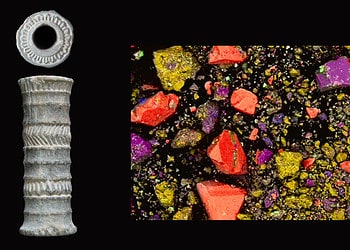
It’s always hard to separate the facts from the fiction when it comes to cosmetics. Companies are so good at marketing and so pushy with their campaigns that we’ve come to believe plenty of myths about how our skin actually works. For instance, how your skin feels is not necessarily how your skin is.
For example, a lot of people report “tightness” after using a cleanser or “softness” after applying a moisturizer. But is this a real process, or is it just a sneaky sensation?
Prediction sensations
Our skin is the first barrier that protects us from the environment. It keeps many pathogens away, as well as things like dust and pollutants. The skin is also how we experience a lot of the environment around us, and that’s because the skin contains a lot of sensory receptors. These receptors fire up signals that turn mechanical signals (like touch) into neurological signals. That’s how our brain interprets information from the skin.
Reinhold Dauskardt, the Ruth G. and William K. Bowes Professor in Stanford’s Department of Materials Science and Engineering, had an idea of how this could happen. When we use a cleanser for our skin, it strips away some of the lipids that hold the moisture — this would actually cause your skin to contract. Meanwhile, a good moisturizer would increase the water content and cause it to swell.
So, in other words, Dauskardt suspected that this sensation accurately depicts what’s happening to the skin. But he had to test it.
So, he measured changes in the shallow surface of the skin in a lab and then developed a sophisticated skin model that predicts what signals it would send. They then recruited 2,000 women in France to assess nine different moisturizers and 700 women in China to assess six cleansers.
“We plotted what we were predicting against what human subjects were telling us, and it all fell on a straight line. In other words, we were predicting exactly what they were telling us,” Dauskardt said. “It was an absolutely remarkable correlation with a very high statistical significance.”
“This work provides a new understanding of how products affect the physical properties of our skin, which includes not just skin health, but also skin sensorial perception. That’s a significant advance,” said Dauskardt. “It provides a whole new understanding of how to design those formulations.”
Your skin is talking to you
The study not only confirms the validity of the sensation but also improves the ability to predict how people will feel after a specific skin treatment. This could be a useful tool for cosmetic companies to predict how different formulations will work.
“It provides a framework for the development of new products,” Dauskardt said. “If you’re doing anything to the outer layer of the skin that’s causing it to change its strain state and its stress state, then we can tell you how that information is transmitted and how it will be understood and reported by consumers.”
By bridging the gap between sensory perception and scientific validation, this study also empowers consumers to make more informed choices and challenges the cosmetics industry to elevate their formulations through science.
Because the next time you feel that “tightness” or “softness” after your skincare routine, know that it’s not just an odd sensation. It’s your skin communicating with you, and thanks to science, we’re now better equipped to listen and understand.
The study “Sensory neuron activation from topical treatments modulates the sensorial perception of human skin” was published in PNAS Nexus.






